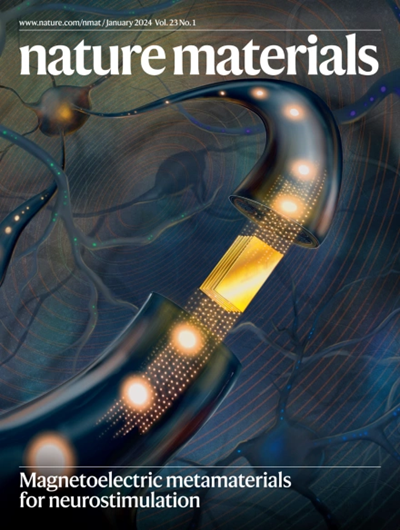超导体近似的锗中的量子点
IF 37.2
1区 材料科学
Q1 CHEMISTRY, PHYSICAL
引用次数: 0
摘要
作为少数具有承载超导体-半导体混合器件潜力的IV组材料之一,平面锗承载近似量子点是实现拓扑超导性并将其与现有和新的量子比特模态相结合的引人注目的平台。我们在锗硅化铂(PtSiGe)超导引线近似的Ge/SiGe异质结构中展示了量子点,形成了超导引线-量子点-超导引线结。我们展示了量子点与超导引线之间耦合强度的可调性,以及充电能量与感应间隙比值的栅极控制,并在偶奇宇称之间调节系统的基态。此外,我们表征了临界磁场强度,发现临界面外磁场为0.90±0.04 T。最后,我们探索了子间隙自旋分裂,在所得光谱中观察到丰富的物理特性,我们使用Yu-Shiba-Rusinov极限下的零带宽模型来建模。我们的发现打开了锗中可选自旋和超导量子比特的物理学,以及约瑟夫森结阵列的物理学。本文章由计算机程序翻译,如有差异,请以英文原文为准。


A quantum dot in germanium proximitized by a superconductor
As one of the few group IV materials with the potential to host superconductor–semiconductor hybrid devices, planar germanium hosting proximitized quantum dots is a compelling platform to achieve and combine topological superconductivity with existing and new qubit modalities. We demonstrate a quantum dot in a Ge/SiGe heterostructure proximitized by a platinum germanosilicide (PtSiGe) superconducting lead, forming a superconducting lead–quantum dot–superconducting lead junction. We show tunability of the coupling strength between the quantum dot and the superconducting lead, and gate control of the ratio of charging energy and the induced gap, and we tune the ground state of the system between even and odd parity. Furthermore, we characterize critical magnetic field strengths, finding a critical out-of-plane field of 0.90 ± 0.04 T. Finally, we explore sub-gap spin splitting, observing rich physics in the resulting spectra, that we model using a zero-bandwidth model in the Yu–Shiba–Rusinov limit. Our findings open up the physics of alternative spin and superconducting qubits, and the physics of Josephson junction arrays, in germanium. The authors achieve gate-controlled proximitization of a quantum dot in a planar germanium heterostructure, an isotopically purifiable group IV material. A patterned Pt germanosilicide superconductor is introduced via a thermally activated reaction.
求助全文
通过发布文献求助,成功后即可免费获取论文全文。
去求助
来源期刊

Nature Materials
工程技术-材料科学:综合
CiteScore
62.20
自引率
0.70%
发文量
221
审稿时长
3.2 months
期刊介绍:
Nature Materials is a monthly multi-disciplinary journal aimed at bringing together cutting-edge research across the entire spectrum of materials science and engineering. It covers all applied and fundamental aspects of the synthesis/processing, structure/composition, properties, and performance of materials. The journal recognizes that materials research has an increasing impact on classical disciplines such as physics, chemistry, and biology.
Additionally, Nature Materials provides a forum for the development of a common identity among materials scientists and encourages interdisciplinary collaboration. It takes an integrated and balanced approach to all areas of materials research, fostering the exchange of ideas between scientists involved in different disciplines.
Nature Materials is an invaluable resource for scientists in academia and industry who are active in discovering and developing materials and materials-related concepts. It offers engaging and informative papers of exceptional significance and quality, with the aim of influencing the development of society in the future.
 求助内容:
求助内容: 应助结果提醒方式:
应助结果提醒方式:


